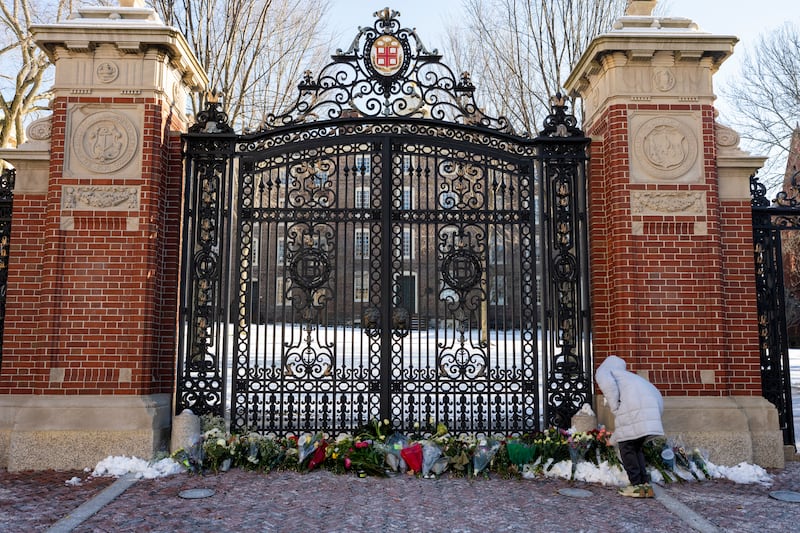Wednesday was "Dee-Day" in RTÉ, as Dee Forbes, director-general of the national public service broadcaster since last July, outlined her vision for the future to hundreds of staff in Studio 4, home of The Late Late Show.
There was not going to be something nice for everybody in the audience.
This was about "relevance and survival". Forbes, who has a habit of slipping in some dramatically blunt language amid more coded management speak, was there to expand on her "adapt or die" message. RTÉ would have to become a smaller (literally, in light of the €75 million Montrose land sale) and "more nimble" organisation.
Cutting the still generous rates of top presenters’ pay is not going to do the job. This is a different kind of numbers game. RTÉ employed 1,978 people as of the end of 2015 – up 122 on 2013 – and, while it continued to hire throughout much of 2016, that headcount is now set to be cut back again.
About 200-250 voluntary redundancies and early retirements will be sought, although the total number who leave may be significantly lower or higher. None of this is unexpected within RTÉ. At one point, the internal whispers were citing a target of 350.
The other big announcement in Forbes’s 45-minute presentation was her decision to replace the existing radio, television and digital divisions with two new ones: content and the more mysterious “channels, audience and marketing”.
Forbes’s “One RTÉ” will be a place that acknowledges that the lines have blurred between once-separate “individual media” in an age where audiences commonly consume all three types of content on the same device.
The news division, led by new hire Jon Williams, will remain as it is, but RTÉ Digital's functions will be redeployed as the entire organisation becomes more digital-focused. This will pave the way for redundancies as RTÉ tries to crack down on "duplication" of roles.
A reshuffling of the executive board, to come into effect in October, will precede the voluntary exit schemes. A group head of human resources, a position RTÉ advertised last autumn, will shortly be appointed and will join the nine-strong board, reflecting the extent to which redundancies and redeployments will be part of the RTÉ story in the years ahead.
Managing director of radio Jim Jennings, an RTÉ "lifer" who started his career in television and was once executive producer of The Late Late Show, will become head of content.
This sounds like a promotion, with the caveat that a great deal of power will rest with the yet-to-be-appointed head of channels, audience and marketing.
‘Montrosian’ confusion
Confusion abounds in the realm Ryan Tubridy dubs "Montrosia", but it is understood that this new appointee will be the person who commissions programmes, either from the in-house production departments overseen by Jennings or from the independent sector.
There will be an open competition for the role, which is likely to be filled by someone with television experience.
Brian Dalton, the corporate development managing director who currently oversees HR, will see his title change to corporate affairs, while a new head of operations and production services will be created, adding to an executive team that also includes chief financial officer Breda O'Keeffe and group commercial director Willie O'Reilly.
Richard Waghorn, RTÉ's chief technology officer, has been appointed head of transformation – a job title straight out of the BBC's self-satirising show W1A. In theory, it should be Waghorn – the infrastructure man – who gets to spend the money RTÉ generates from the long-delayed sale of 8.64 acres of its Montrose campus. The Savills Ireland guide price is €75 million, but RTÉ stresses that this is a gross figure and there will be a tax liability and associated costs.
What happens to the money it does receive is now a matter of some intrigue. Forbes stressed to Seán O’Rourke on Radio 1 that it would be “reckless of us to use that money to shore up the deficit”. But in a separate statement one of the uses outlined was “to reduce debt levels”.
For years, the money was earmarked for long-term capital investment, including critical upgrades to transmission technology and broadcast facilities, aka “building refresh”. Once this was a case of RTÉ future-proofing itself. Now it admits it is “playing catch-up”.
Some ambitions seem modest. Forbes said RTÉ wanted to produce soap opera Fair City and all of its news content in HD, while she also spoke about ridding the RTÉ Player of that old irritant, buffering.
Financial squeeze
Deja vu flavours news of this latest financial squeeze. Matt Cooper, interviewing Forbes on Today FM, said he had lost count of the number of times RTÉ had announced 200 redundancies, only to see its workforce climb back above 2,000. Even the strongest supporters of public service broadcasting query whether RTÉ is the right size for the small scale of the Irish market.
The broadcaster is also no stranger to deficits, having recorded four consecutively between 2009 and 2012 thanks to a sharp collapse in advertising income. After a stable 2013 and 2014, it slipped into a €2.8 million deficit in 2015, while the “planned” deficit for 2016 is neither confirmed nor denied to have surged to €20 million.
Assuming the payouts are not funded by the land sale, the two-year phasing of redundancies may mean that RTÉ is destined to spend the summer of 2019 talking about how it made its fourth consecutive deficit in 2018.
It’s hard to envisage an imminent bonanza on the commercial side of its income, which came in at €155 million in 2015 – less than the €179 million licence fee funding it received that year.
The other big option is to cut a limb. RTÉ operates more than 25 services, Forbes points out. Indeed, even by noting this number, she may be hinting that an axe will fall.
The problem is that most of its services are either popular cash cows (RTÉ One, Radio 1) or they cater to an uncommercial niche with public service merits. After its battle to shut down the longwave radio service and the negative response to its botched retreat from kids’ television production, it may feel that it cannot win.
RTÉ Two and 2fm are both picked on as possible casualties, falling uncomfortably as they do in the zone between commercial and public service. RTÉ has to be careful here, as to give up on elusive younger audiences would be akin to signing its own death warrant. But one awkward question for the future is this: If so many people are watching “content” and not channels, then is it necessary to operate channels at all?
Regular repeats
The more immediate predicament for RTÉ is the “value for money” one. It is already finding it difficult to cut its cloth without letting it affect its output. It is broadcasting more regular repeats of flagship commissions, thinning the schedules around the edges and losing or bowing out of expensive sports rights battles. But the more it does this, the more it will seem to justify complaints – from some – that is not worth the price of the licence fee.
Amid the strange news coincidence of a deficit-prompted redundancy plan and a land sale windfall that is definitely “not a windfall”, there was a third spate of RTÉ headlines this week.
Converting the €160 annual fee into the more pleasant sounding 40 cent per day (it’s closer to 44 cent, to be pedantic), Forbes affirmed on Radio 1 that this was “incredible value for money” and “quite honestly I think it should be double that”.
But Forbes wants the licence fee to be doubled the way I want my salary to be doubled. She soon backtracked, conceding that this was a “nonsense”, and restating a view long-held by RTÉ – and many others across the industry – that the Government needs to reform the licence fee collection and enforcement system. Some €30 million-€40 million is estimated to be lost to evasion each year. That’s half a Montrose land sale.
As might be expected, RTÉ has asked for an increase in the licence fee rate as part of its negotiations with the Government. It's unlikely to even get a fiver extra. But other measures, like the appointment of an enforcement agency other than An Post, or a move to fund more of TG4's budget direct from the exchequer, would help.
Participants in the debate can be split crudely into two camps. There are those who believe that everything possible should be done to reform RTÉ precisely because it receives public funding and should continue to do so. And there are those who take the more Trump-like position, hoping to slash or eliminate this public funding, and with it RTÉ and the Irish broadcasting sector as it currently exists.
RTÉ’s fate is far from certain. But if all else fails, it does at least have another six acres of land it can sell to keep the show on air.

















